-
- 08
Mar - (0)
SmartPhone Security and Mental Health Confidentiality
Perhaps I have been proven wrong…
Recently I looked into SmartPhones in medical use, and commented that I felt the applications were not ready for prime time due in part to questionable security (passwords and a secure connection). If it was my mental health data being broadcast across the planet, I’d want to be sure that the distance between the server and the SmartPhone being used by the professional helping me was a secure connection, and my confidential healthcare data would not be intercepted by somebody else.
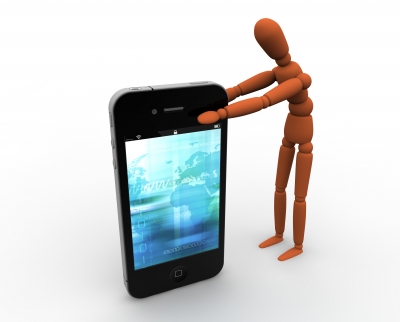
Well, the proof arrived from Andrew Isham, the director of development for A-CHESS. That’s the SmartPhone app being developed for treatment facilities by the University of Wisconsin. Data coming from and going to the fileserver, whether it’s from a workstation with a secure network, internet connection or SmartPhone, is forced to a login page that sets up the VeriSign security certificate, assuring data encryption. VeriSign is an old hand at this sort of work. I’m not a real tech nurd, however I am pretty tech-savvy, and the explanation satisfied me that the security concern I mentioned in conjunction with SmartPhone connections is no cause for anxiety attacks. All is well. Breathe.
I heard on the radio (one of the wonderful news programs on National Public Radio (NPR) that SmartPhone app development is the fastest growing segment for jobs in the tech industry and looked into it. It turns out that it’s so popular that the traditionally required experience and education is being ignored in the search for people to do this sort of work for software companies. It’s a big deal. My marketing and sales background tells me that even though we’ve seen this sector grow with leaps and bounds lately, we are at the tip of the iceberg.
The question of how appropriate EHR products are to deploy on the SmartPhone and other hand-held devices has come to my attention for a number of years. At least 20% of the organizations I’ve talked with over the past 5 years have a professional on staff who asks about this technology. A friend of mine who runs a mental health and addictions treatment oversight agency has been so serious about using hand-held devices for EHR purposes he developed his own application for this purpose years ago. He was ahead of his time, and I’m certain he’s happy to see this trend.
As I implied above, a commercially viable SmartPhone product needs to synchronize with an agency’s EHR housed on a server. That way the data is available to others treating the consumer, provided the consumer has signed off a Release of Information for them to see the treatment documentation. ACHESS is the product closest to deployment I’ve seen, and most professionals in this business are not likely to develop their own apps like my friend mentioned above. I predict a well-researched app for SmartPhones could be a small part of an enterprise EHR system that will make or break system sales to new agencies very soon. Now that I know security is not a problem, I’m eager to see how they work in scheduling appointments and collaborative development of assessments, treatment planning and progress notes with consumers.
Let me know if you see any mental health and addictions treatment EHR’s that have this sort of functionality working for professionals and consumers in the field. I, for one, am very happy to see some movement in this direction; and my interest was prompted by the silliest thing: learning to send text messages to my kids on my SmartPhone.
Read more → - 08
-
- 08
Mar - (0)
Negotiations…
How much does it cost?
We have a tendency to move in that direction when we first start investigating a purchase. Unfortunately, the cost of a thing doesn’t necessarily tell us anything about its value. So, whether I’m buying an egg or an Electronic Health Record (EHR), I need to divert my thinking from cost to what I get out of it. I have to watch my cholesterol, so I watch the eggs, and when I help agencies buy EHR’s, I look for comparative benefits to the consumer and professional.

There are tons of books out there on negotiating (just Google it), and if you’re making a large purchase, from a car to an EHR, and it’s not a bad idea to know a salesperson’s perspective before going into negotiations. I found Roger Dawson’s book an easy read and illuminating for that purpose.
The EHR purchase affects both consumers & professionals because the facility always needs to purchase more outside services & schedule training, f/u with all staff to assure they’re using system and using it right in order to get the value out of the system.
The consumer feels the effects of an EHR when service is disrupted due to lack of training, or because a form that’s supposed to speed an intake doesn’t work right and it just takes too much time to finish the paperwork…or worse, a problem leaves the consumer in the waiting room, without the help he’s asking for. These troubles can usually be avoided during implementation if the agency is wise in not cutting corners on services to implement the system. Earned wisdom includes hiring or assigning a full-time, experienced internal person to tend to agency business and assure the consumer experience is not disrupted.
The real negotiating point for the price software is the license. Most companies that sell software are manufacturers, so the cost of the building the software has been reconciled by selling enough system licenses to pay for that cost. If this is not the case, you may want to re-think the company you are working with from the angle of experience and that earned wisdom I mentioned above.
In this sector a ton of companies manufacturing EHRs (84 good ones started in my last search process for a customer). Many were born at a mental health facility as a home-grown system. They’re probably fine, provided the company has spun off from the original agency. If a company can’t stand on its own two feet and keeps going back to the mother company to meet payroll, they may not be around long. It really makes people grouchy when their helpful software people just disappear one day. Agencies buying software need to be conscious of this.
Impelementation services like importing existing data into the new system, configuration, training and fine tuning are really no place to cut corners. It always seems staff needs more help, and when they can’t get it because the facility didn’t pay for it, they get can get grouchy. In addition to the original problem of making the software work right, consumers feel this, simply because the EHR is part of their treatment experience. When a consumer needs help, the last thing he wants to run into is resistance due to software or user problems when somebody has offered to help them in the first place; It’s a no-win situation. A good negotiating point is to plan to add optional services, they will likely be needed.
An agency also needs to pay attention to things like the HITECH Act the software support reputation (call a bundle of references, not just their preferred customers), and their internal experts available to successfully implement the software.
My jaded and self-interested advice is to hire a professional. A good consultant can counsel the entire staff, bottom to top on how to get a product that proves to be a good value: An EHR that improves the consumer experience, satisfies documentation requirements, improves the quality of the agency and doesn’t make people grouchy and defeat the purpose of mental health improvement.
Read more → - 08
-
- 25
Feb - (0)
What happened to Innovation?
I like new gizmos. I think most of us do, evidenced by the rocketing success of the Apples’ iPod, iPhone, and iPad.

These American products are taking over the world. Unfortunately, in medical technology, the trend is putting us behind the worldwide curve for the availability of innovative and exciting medical gizmos and medical technology in general. Price Waterhouse Cooper says this is a product of good, old-fashioned capitalism. American companies are seeking worldwide for medical solutions that can be marketed quickly and effectively. The fear of releasing products that are not approved by a government agency makes it hard for companies to market medical technologies.
Naturally, we’ll get the goodies eventually, and American professionals can be the last ones to get new technology, so American consumers could be the last to benefit from innovative gizmos and technology. It seems the increasing wealth in emerging nations and Europe is enabling these markets to pay the freight for the cool stuff.
Why is this so?
It’s simple, really. There’s a long history of medical technology being released in this country with negative effects, Medications like Ephedra (a base chemical for crystal methamphetamine, or speed) and Avandia for treating diabetes have their troubles, and Americans are frightened. Medication side effects, X-Ray or other electronic emission exposure, and gizmos manufactured and marketed with flaws have led to government intervention and a hyper-vigilant attitude toward medical innovation. This leads to more testing and a slower release curve, which looses time that can instead be spent marketing the product in other countries. Evidently, the rest of the world is not as careful (fearful?) of things going wrong as Americans are.
Combine this with the idea that the rest of the world is getting rich enough to afford new medical technology, and it’s easy to understand why the rest of the world is getting access to gizmos and medications before us.
In mental health and addictions, gizmos may be less of a factor than with other health concerns, like deteriorated knees that can now be replaced with artificials, however consumers can still benefit from technology, mostly in the area of diagnosis, like with brain scans.
It’s hard to tell what other technology can benefit mental health and addictions treatment when we aren’t clairvoyant, and still, it’s on the way. I guess the point of this meandering discussion is that as Americans, if we’re seeking a new solution to our mental health or addiction problems, technology may be on the way, however, in order to use it, we may need to take a European vacation. Provided we could overcome the fear of side effects and make the bold move to seek offshore solutions, the manufacturer of the gizmo would be happy, and we might end up with improved mental health.
This brings another factor to light…will insurance cover solutions a consumer seeks outside the United States, like use of a gizmo to bombard some brain malfunction that leads to depression or anxiety with newly discovered, healing electronic emissions? I bet they’d want to wait till the item was approved by the government for use in the United States (by the way, I made up this example).
If you’re intrigued about the prospect of an offshore solution to a mental health problem, keep your eyes open and keep surfing the web for new, innovative technology that’s becoming available elsewhere in the world. It’s a good idea to know what we’re getting into when we make bold moves, so check with your insurance company to understand who’s paying the bill, and understand possible side effects of any new treatment.
Read more → - 25
-
- 22
Feb - (0)
SmartPhones In Addiction Treatment
I hope I have been proven wrong…
Recently I looked into SmartPhones in medical use, and commented that I felt the applications were not ready for prime time, and that I hoped that somebody could prove me wrong as to the reason why: security. If it was me, I’d want effective security that my communications over the SmartPhone were going to the person I directed them to, and would not be intercepted by somebody else.
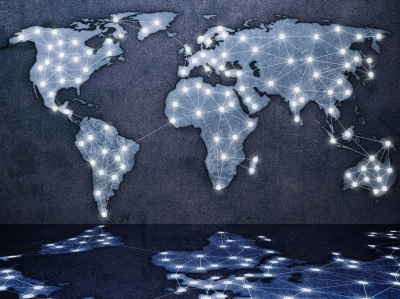
Well, the proof hasn’t come to me yet, and I must share that it may be on the way in the form of ACHESS a SmartPhone app for alcoholism and addiction treatment. A study is under way for ACHESS that will test its features from “panic buttons” to GPS locators helping consumers get peer and professional support when they are experiencing cravings or have wandered into the wrong place to stay clean and sober.
ACHESS, or Addiction CHESS, is being tested in the field right now, and we’ll know the outcome in a few months.
I like the ideas that form the foundation of the app and how it’s used.
- • When a consumer feels a craving to use, or her sobriety is jeopardized, hit the “panic button” in the app and you can be connected to somebody who can help overcome that craving
- • If a consumer has a tendency to drift into “old playpens” to connect with “old playmates” and abandon sobriety, the GPS tracking can help peers or professionals offer relapse intervention, simply because they know the habits of the consumer and locations of past usage of alcohol and substances
- • When somebody new to sobriety doesn’t know what “tool” to use (phone call, breathing, mindfulness, prayer, etc), the consumer can consult the app for an effective way to overcome dangers to sobriety
- • An approach to presenting tools tailored to the consumer instead of a “one size fits all” can improve the effectiveness of the treatment and encourage consumers to make choices for sobriety
Still, I wonder about security. I reviewed the ACHESS web site, discovering that current iterations of the product are primarily for the home computer, for which SSL and a few quite good security solutions like Citrix are about as effective as you’re going to get. The problem with the SmartPhone is that it’s wireless, and if your messages go out into the ether without some sort of scrambling called encryption, there is a high likelihood they could be intercepted. Addiction treatment has long been concerned with protecting the identity and treatment records of consumers in treatment, and that’s not about to change.
I looked, I called, and I Emailed, and still have no answer to this concern…then again, the test is just beginning, and the answer to that question is forthcoming.
…more to come.
Read more → - 22
-
- 14
Feb - (0)
Memory
Can you imagine remembering all the details of fifty cases?
In depth conversations, screening scores and results of a plethora of assessments bring an incredible amount of information into the mix for a single consumer, and in some treatment environments, mental health and addictions professionals can be responsible for the health of fifty consumers. Keeping the details straight seems like an impossible task, which is one reason charts were invented in the first place, and these days, one of the greatest reasons why the Electronic Health Record (EHR) is invaluable in the treatment world.

Thomas Insel, director of the National Institute of Mental Health tackled Memory in a recent blog, and the first thing that came to my mind was how computers store data and assist in decision-making. This study of human memory indicated there is a period of time where memories are fragile and begin to break down…computer data doesn’t do that. Once you have it stored, you can retrieve it in that condition any old time you want it. Still, I wouldn’t say the computer’s memory is better than a professional’s (some days, perhaps it’s more accurate).
A computer saves a series of on-off switches onto its hard drive without intuition attached, without feelings associated. I begin to question the type of record that is saved. A simple suicide assessment can be a record of seven to a dozen questions or so, with answers that can be scored…something like “yes” = “1”, “maybe” = “2” and “no” = “3”. Write down the answers and add up the scores, and poof! You have a scorable assessment, and if you string a few iterations of this type of instrument completed over a period of time, you have an “outcomes study”. The next question becomes “How reliable is this?”
If a patient knows he will be admitted to a facility, and is tired of living in a ward, he may elect to be less than truthful when answering the questions, indicating everything is fine, just fine…when it really isn’t. If the consumer is accustomed to this sort of assessment, he could be sent home because the answers to the assessment indicate he doesn’t need help. The judgment of the seasoned professional increases in value, and relying on a short assessment like this becomes questionable. Naturally, this doesn’t mean the technology is meaningless or valueless, just that it’s a tool, and the trained professional makes the decisions for treatment.
Based on a discussion with a patient while filling out an assessment, professionals may want to look into matters a little more deeply…other tools are at their disposal, including audio and video recording of filling out the assessment, which should be a collaboration between the consumer and the professional.
Most EHRs have the ability to attach electronic files to a patient’s record, like an MP3 video recording of a session. This sort of technology can be revealing as a study of non-verbal communication, and the drawback is that it’s cumbersome…once you record a session, the exact spot to be studied needs to be accessed, and locating it could take a while. The up-side to this idea is that it may be more reliable than human memory. According to Insel’s research, when memories are retrieved, they can be changed, decreasing their reliability. An assessment’s answers or a recording won’t change. They are what they are.
Not long ago, this sort of technology required a substantial investment and a lot of equipment. My Notebook cost $400 and came with a camera that records audio/video in formats that are readable on most PCs.
The idea of recording sessions is an old one. Perhaps it’s time to re-visit some ideas about the EHR like attaching electronically recorded treatment sessions to the consumer’s record. Reviewing records like this could prove to be a lifesaver.
Read more → - 14
-
- 03
Feb - (0)
Anonymous Struggle
Is this anonymous?
I ran across a headline sharing the wonderful news for OneRecovery who recently closed a deal with Aetna Insurance. Good for them, the salesperson in me cheers and applauds. For the consumer who is a member of the Aetna EAP involved in this sort of service, it means being attached to a traceable series of numbers to track usage. Before participating in programs like these, look into the security measures offered. Some are good, others may not be so great.

An EAP, or Employee Assistance Program, offers a number of services, some of which revolve around mental health and addiction services. Some EAPs offer telephone counseling with a professional, as well as other life-skills services.
Once again, our health information could be further shared due to insurance companies’ “need to know”…which, incidentally, is legitimate to a certain extent. After all, when an insurance company is paying claims, it’s only good business to know where the money’s going. That said, if I were a consumer just trying to overcome addiction or alcoholism, I may want to guard that information from my employer; if not the fact I was frequenting a site specializing in bearing one’s soul with relationship to the disease of addiction, then certainly to the details about my symptoms, relapses, etc. Recovery is a personal affair that improves lives, creates good workers and helps people become participating members of society who pay their bills. One question becomes “How do we keep recovery on that deeply personal level and still enable insurance/EAP billing without disclosing sensitive treatment details that are nobody’s business but the recovering person?”
Living up to this sort of ideal can be tough, but not impossible.
On the back end of social networking for recovery support, if somebody provides a service, whether it’s telephone counseling, monitoring a chat room, writing a social-networking software program or keeping the server up and running, they need to feed the baby and buy shoes. So, statistics, lots of statistics, need to change hands to assure the work’s getting done and the service is proving valuable. Proving that legitimate services were provided becomes an interesting challenge, not because the statistics aren’t available, but because of the details involved that really shouldn’t be shared.
Many years ago, a company in New York worked with the state to assure anonymity of substance abuse treatment consumers statewide. The state needed to provide and track Medicaid services to consumers in treatment in order to assure professionals got paid and consumers received the treatment they needed without names attached. Maintaining anonymity was a problem. The solution was to hire a third party who was the keeper of the numbers and the names. The state didn’t get the names of consumers, just the numbers. The idea worked fine to guard anonymity of involved consumers. The company that was hired had physical security that made it tough to get into the place. Years ago, the manager of this private, third-party facility protected the identity of a patient, not releasing records to the court and risked jail time. Security was about as good as a consumer could hope for. Every scrap of paper that might remotely be attached to a consumer was shredded, and even computer backup tapes were tightly guarded in a secure environment.
Private insurance companies aren’t necessarily as concerned with confidentiality. Although they may not release records without a consumer’s permission, how much information needs to pass from party to party? I’d say, just enough to validate that a service was provided by a qualified professional, who follows the rules established to protect consumers and assure treatment helps them recover.
I think the on line support groups are a good, and there are a number of them available: Here are a few:
- • In The Rooms
- • Cyber Recovery Network
- • Christian Recovery Ministries
- • Online Recovery Support
If you’re shopping, I’d suggest you ask about security, and think about how your information, intimate details about a problem that you might discuss in a chat room or on-line with a professional, might be shared with folks like insurance companies, or as de-identified data for research. What safeguards are in place to protect your anonymity?
Caution on the front end could avoid some trouble down the line.
Read more → - 03
-
- 26
Jan - (0)
Text–Nology
I admit it. I text. Almost everybody does these days.
Texting on your Smartphone is not a far cry from a professional in a behavioral health hospital or outpatient addiction treatment center keeping notes or other treatment documentation on the device. In fact, companies like New Mexico Software are developing medical record solutions for these devices at a record pace. I thought I’d investigate products that have been sold to professionals, are effectively being used and proven in the field.
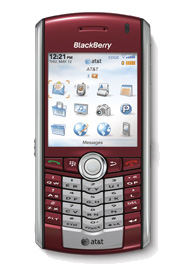
I prefer the thumb-driven phone keyboard as opposed to the touch screen, probably because I’m used to it, and don’t want to get used to the new device. I’ve actually improved to the point that I can write a pretty detailed Email with fair speed. This gives me hope that using the small-screen environment to do real work is not just a pipe dream. Somewhere, it’s already happening, I’m sure professionals are writing their notes on their devices and somehow getting the note transferred from their phone to the Electronic Health Record (EHR) resident on the server of the agency they work for.
This prompts me to immediate suspicion…consumer confidentiality is a huge issue in our business, and I asked myself if HIPAA rules were being broken with this technology strategy? HIPAA is a rule that protects privacy of health information and is enforced by the US Office for Civil Rights.
I became quite frustrated looking into possible SmartPhone solutions, I found nothing conclusive. I ran across so many open ended arguments about the iPhone and iPad’s HIPAA security compliance, I decided to concentrate on the one I use, the BlackBerry. I ran across a fair source for the basics in the HIPAA Compliance Journal. Since Email is the foundation of electronic data transfer in the mobile environment, it seems a logical place to start exploring to determine whether the Smartphone is a secure enough device on which to keep or share consumer information. First of all, there may be no way to assure outgoing Email from a BlackBerry will remain secure, especially if it is forwarded to other treatment team members or to the consumer. Consumer information that’s quoted in Email is probably breaking HIPAA rules. This means the IT staff needs to be very savvy in order to assure the information makes it to the EHR without having to pass through public air space in an unsecured state if this technology is to be used.
The simplest thing to do is assure the entire Blackberry mobile network is set up in a secure fashion, to avoid insecure transmissions of data. This is just a matter of configuring the Blackberry with the Secure IMAP selection.
So, you say, that’s Email…what about documents like progress notes written on the Smartphone?
In a general sense, many mental health EHR software manufacturers offer mobile solutions. These are usually a service available on the Internet instead of software that’s installed on a mobile device, and come with secure methods of access. Using the software could be as simple for the user as launching an Internet browser on a Smartphone. The problem comes in with real estate. The Smartphone’s screen is too small for most professionals to find the environment effective to do any real work in the program.
Unless there is an App, a special, small program that installs on the Smartphone to deliver a screen that’s limited enough to perform a practical task like writing a note. I’m not aware of companies who have this capability up and running as part of their product, and would really like review the feature/functionality. Companies like New Mexico Software (above) are working on that.
So, if a mental health or addiction treatment professional wants this capability, it may come down either waiting for technology to catch up, or selling the idea to the folks they work for to develop it, simply because it falls into the bucket of software out there that’s “not ready for prime time” Hope somebody proves me wrong.
Oh, and about texting patient information? Make sure you have a secure environment that meets the HIPAA rule if you’re doing this.
Read more → - 26
-
- 23
Jan - (0)
Epidemic Treatment
Addiction to opiates is in epidemic proportions in many areas of the country. In Suffolk County, NY, it’s become so high-profile that the county launched an opiate epidemic advisory council seeking community help. Folks from all over the county have offered energy to help the community recover from this societal disease.

There are a number of methods of treatment, including 12 step groups, psychotherapy, hospitalization, and methadone, buprenorphine or suboxone for people requiring ongoing medication to overcome opiate abuse. I have worked with many methadone clinics over the years, and was happy to see that a number of clinics are working to improve their businesses…with the projected increases in people who need treatment, this improvement is vital.
According to NIATX, a group that helps mental health and addiction treatment organizations with their businesses, efforts have been successful in helping methadone clinics increase their capabilities to serve more people with opiate addiction problems. I was also glad to see that the solutions to making more widespread treatment available are served and improved by the Electronic Health Record (EHR).
Referrals Who knows who’s having trouble with opiates and is having difficulty recovering better than people in methadone treatment? Rewards were offered to consumers when they brought new folks needing help through the door. The program was effective enough to increase admissions at one agency by 53%. That sort of growth could create a minor problem: How do we track who brought whom through the door, and the rewards owed or delivered? A simple referral module in the EHR does the trick. After the fact, built in report writers can help evaluate long-term retention in treatment for people involved in this referral program…and save a lot of man-hours that might have been spent counting beans. Manual tracking of programs like this is seldom analyzed to determine effectiveness just because people are busy with their regular jobs and view analysis as busywork. Using computers to do that job makes sense.
Therapy Group In a number of states, Medicaid has switched to charging for each service delivered as opposed to a traditional method of a single fee that includes all counseling, medication or other services when a consumer walks through the door. Clinics are finding they need to offer different and separate types of treatment services, including group treatment. Groups require a two part note documenting both group focus and consumer focus, as well as scheduling to create a roster…a roster in the EHR saves time, increases accuracy of attendance and billing accounting. The note assures the team will know of emergent issues for consumers and assures they get more individual help if needed…not to mention fulfilling billing requirements. Another benefit of the EHR in this instance is the focus of the group; analyzing group notes can point out needs for therapy groups that focus on different topics.
Immediate Service The EHR can help manage inquiries by people needing help, including a quick scheduling for the consumer to talk with a counselor. The disease of addiction can make people rather impatient, so the quicker the service, the better. Central scheduling enables scheduling of appointments in the next empty time slot that works for both the consumer and a counselor. Without that up-to-the minute management capability, connecting the two can be difficult.
With opiate addiction in epidemic proportions, it only makes sense to help professionals deliver the highest quality care to the most people. Optimizing use of the EHR is a vital tool in serving more people in your neighborhood who might have a problem with medications like oxycontin or Vicodin, or street drugs like heroin.
Read more → - 23
-
- 16
Jan - (0)
Consumer ID
I remember odd stories of people being referred to professionals and treated for conditions they didn’t have because they were mistaken to be somebody else with an entirely different problem. Wrong medications can be delivered or professionals can act under false assumptions when working with the consumer. Confusion like this can be avoided with positive identification methods available to the Electronic Health Record (EHR).
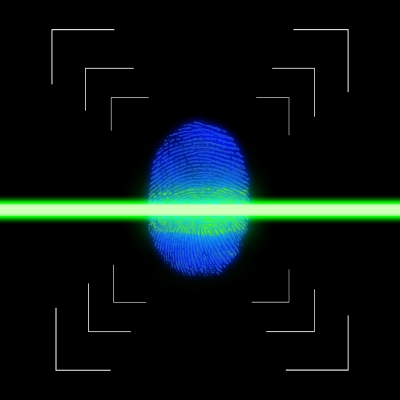
A little over a year ago, Rand Corporation said that the Unique Patient Identifier would cost $11 billion, and pay off nationwide in reducing these sorts of medical errors, and in simplifying the nationwide effectiveness of the Electronic Health Record (EHR), which in turn can introduce a high level of efficiency, and a way to enforce patient privacy. Thank you, Rand. In the EHR manufacturing world, we’ve been selling these ideas for many years. Hopefully Rand and other high-profile companies will help make the nationwide Unique Patient Identifier a reality.
One important result of the nationwide Unique Patient Identifier for consumers would be patient confidentially, or so we’ve said for over a decade. Patients deserve to have control over who knows their mental health diagnosis or any information about their stay in an addiction treatment center. Typically, we’ve accepted we will be identified by a number, so what number do we use? The Veteran’s Administration uses the social security number, identifying VA Hospital patients by last name and the last 4 digits of their SSAN. I don’t know if that’s good or bad, but it certainly seems effective.
Occasionally we hear of breaches in confidentiality like the loss of a Veteran’s Administration laptop in May of 2007 with a gazillion veteran’s names and numbers on it…like social security numbers. That single event woke me up to how important it is for me to maintain the confidentiality of that particular number.
Let’s use my old pal Kenny as an example of how this “secret” and private number has been spread around. Who has Kenny’s social security number? Oh, everybody, it seems.
- Social Security Administration
- Internal Revenue Service
- Chase Manhattan, Bank of America, and every other lending institution Kenny’s done business with
- Verizon (there’s a mistake)
- Allstate, GEICO and every other insurance company he’s done business with
- Brookhaven, New York Presbyterian, and Ashland Community Hospital in Oregon, plus any other hospital that’s treated Kenny
- Dentists, optometrists, and other specialists from coast to coast
- Landlords, ex spouses and kids
In short, that secret number isn’t very secret, but it’s the closest thing that we have to an identifier. In my book, it’s time to abandon the idea of the social security number as a single identifier…it’s too compromised.
The solution for me seems to be technical. What’s done is done, and Kenny can’t do much about it. Perhaps you can. You don’t have to share your social security number with anybody…Verizon and the banks might argue about that, but it’s a law. These companies may not let you use their services and products as a result. No phone and no mortgage could be an inconvenience.
Signature pads have been in use for many years to validate consumer identity. A common software technology ties the signature to a patient ID. If consumer data needs to be shared with others, the patient signs for it, validating his Unique Patient Identifier. This assures the consumer is in control of who sees what. Without the signature, these entities who have your information can’t share it, and if they do, they are at great risk. Somebody could be open for a law suit or jail.
Voice technology, face identification, and retinal scans are a few other methods that can be used to validate Kenny is who he says he is, which is handy in the case of identity theft. Most of the organizations like credit bureaus and medical providers (probably your friendly neighborhood Community Mental Health Clinic) simply pair the SSAN with the date of birth, name and/or address, which is simple. Is that secure enough for you?
A solid, durable signature pad costs around $200 (the $100 model wears out quickly in a production environment and the $400 model with LED screens and interactive technology may be overkill). The other solutions cost a bit more, but so what? Technology is a pretty reasonable solution to assure nobody else is using a consumer’s ID, and confusing a person’s diagnoses and treatment with somebody else or spreading it across town or across the country without that person’s permission.
The simple point is, when it comes to treatment, maintaining confidentiality is tough and getting tougher as the National Health Record becomes a reality, and in the end, every citizen needs to take responsibility for the security of his ID. Keep your eyes and ears open, campers!
Read more → - 16
-
- 05
Jan - (0)
Remember Voice Technology?
Years ago, while vice president of a small Electronic Health Record company, the dream of speaking into a microphone and having progress notes magically type themselves came up in every presentation, and the answer was similar to today’s answer: “That’s not part of the product, and it’s very possible using a product like Kurzweil Speech Recognition software”. We considered integrating speech recognition into our product.
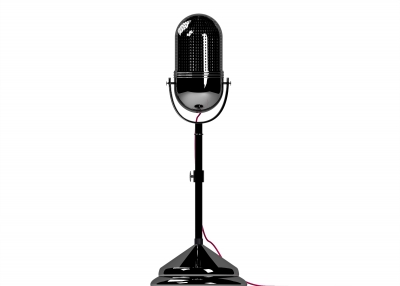
Even back then, it worked great once you got it set up. The software needed to know your speech patterns, your voice and such. Any idiosyncrasies brought into the mix like dentistry or an injured tongue or a strong accent really threw the software for a loop. Like I said, the software worked fine, it was the setup and changing patterns of our voices that could throw a monkey wrench in the works. Consequently, speech recognition software was seldom used…Oh, I almost forgot, you could have bought our company for what the voice technology cost, so we declined to integrate the product.
The technology is much better now, and still in our field, seldom used. There are a number of high quality systems on the market that are available for a reasonable cost, like Dragon software, (and I imagine Kurzweil, too). You don’t have to go far for examples of how the technology has advanced. Most automated telephone systems with voice recognition do a good job, and the system that bowls me over is the Long Island Railroad system at 718-217-5477. Sometimes on a cell phone under less-than-optimal conditions, you might need to wait a while the system “thinks” about your response, but it picks up from that point well. Voice technology seems to no longer need much coaching or training to deliver what ‘s needed.
In mental health and substance abuse facilities, people ask about this technology for the benefit of those who don’t type. I learned to type in high school. I was a healthy boy and that’s where the girls were. I liked being there and over the years typing became a stream-of consciousness phenomenon. I don’t touch a writing implement often these days. My suggestion throughout the years has been to learn how to type if the effort and price tag is too high for voice technology. In this age of texting, select boxes, templates and drop-down dictionaries, that opinion has to go. The technology seems to have arrived, and by purchasing Voice Technology software for a PC, speaking notes and having them automatically type into memo fields us usually a snap.
Traditionally doctors have been the ones who used voice technology, historically that means Dictaphones. Today, it means software like those mentioned above. Most EHR software will accept input from the software. As I understand, the computer changes the voice input into typed characters, and they look like standard keyboard input to most software when your cursor is focused on a memo field.
It’s only rocket science, and we’ve been doing that since the Chinese invented fireworks rockets, long, long ago.
Once a doctor or other mental health professional uses the software, the text will still need to be edited, since we don’t write like we talk…not a big deal once we get the hang of using it, and that usually means the person using the software has to do the editing. This eliminates the drudgery and expense of having somebody listening to the recorded message and type the notes into the EHR.
Call me old-fashioned. I like to type. If you know professionals who don’t, suggest they look into voice technology; it’s a new world.
Read more → - 05
